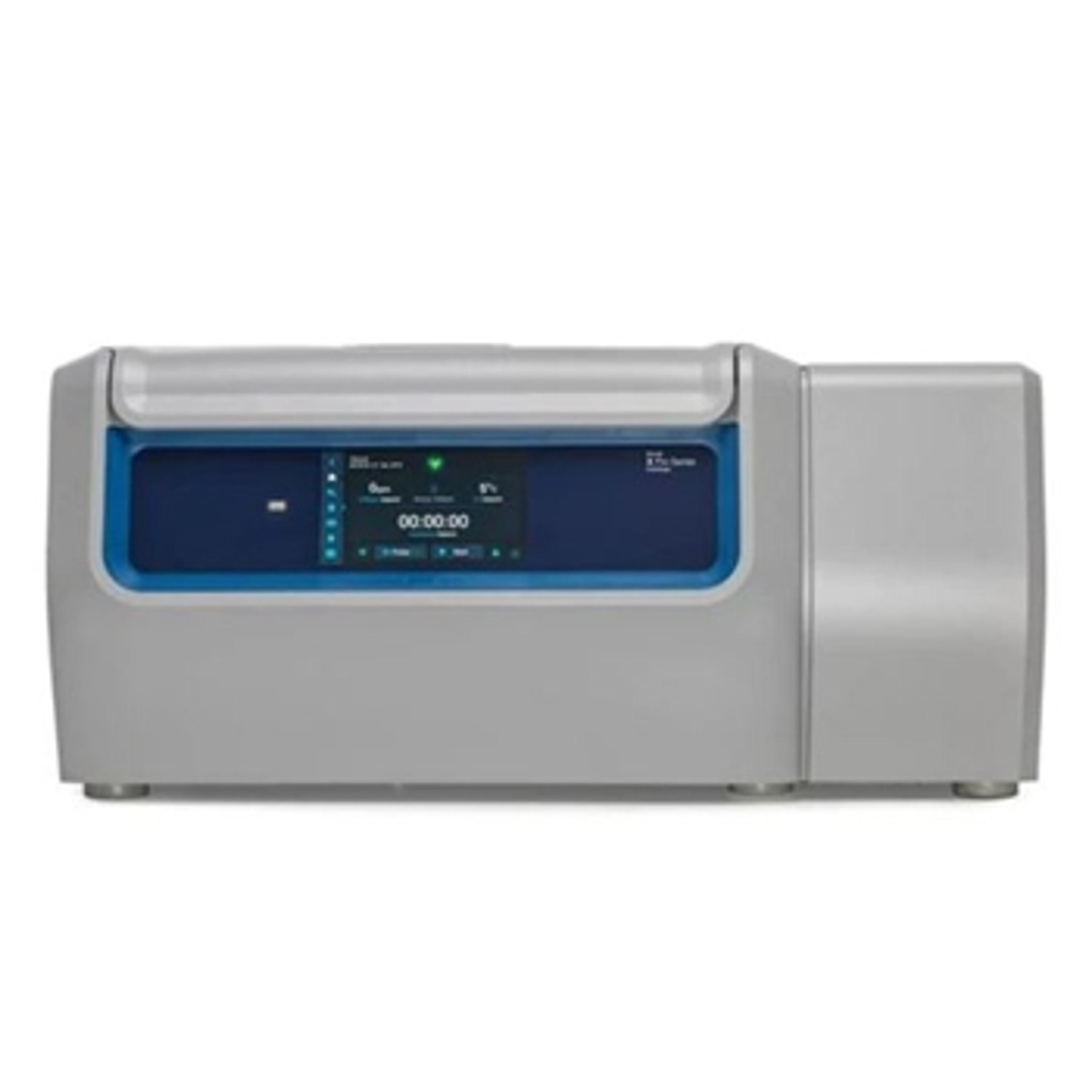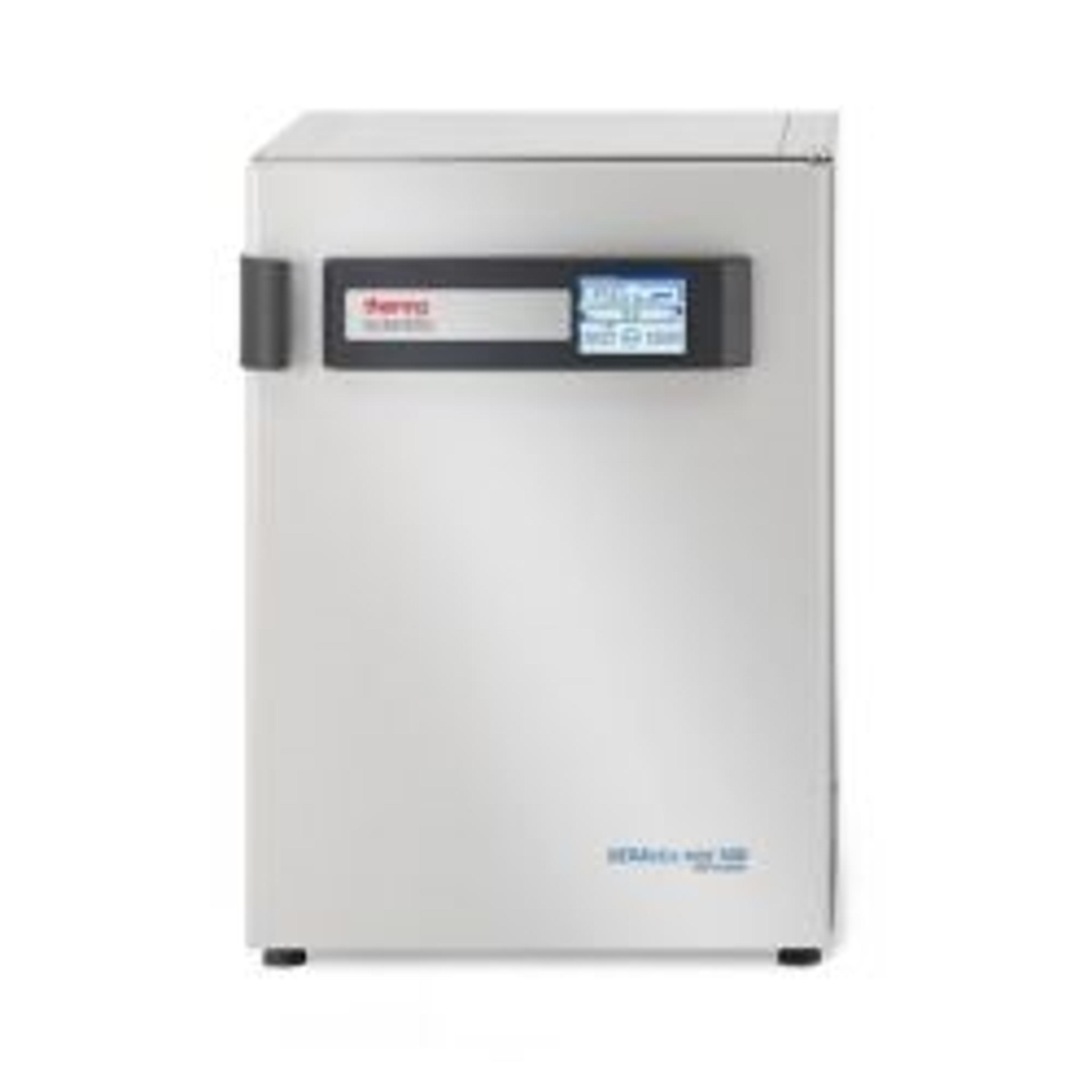Finding new ways to control cell culture contamination
Cell culture applications expert reveals top tips for reducing microbial contaminations in mammalian cell culture labs, how best to protect cell cultures to enhance cell growth, and explores why your lab equipment could have a direct impact on cell health and contamination
13 Jan 2023
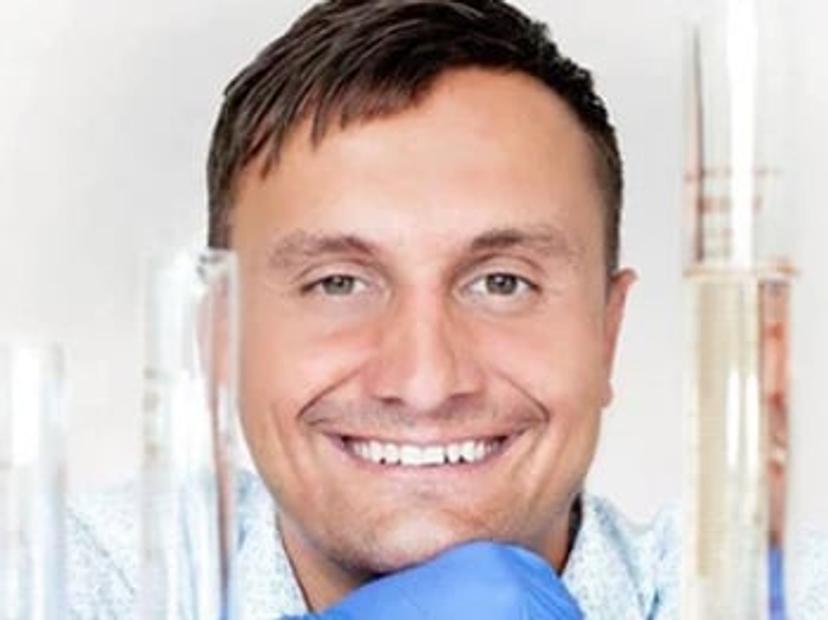
In this exclusive SelectScience® interview, we speak with Kris Wronski, EMEA Cell Culture Applications Scientist at Thermo Fisher Scientific, to find out more about the dangers of unwanted microbial contamination in cell culture labs, and how contamination can have a direct impact on cell growth and overall cell health. Wronski lays out his top tips to combat contamination, and how to ensure that your cell cultures thrive. Wronski also explains how your lab equipment can directly impact your cell culture success, reveals how to make CO2 incubators work in your favor, and shares the importance of reducing contamination to protect valuable samples and promote good scientific practice.
How cell culture contamination can impact results
Contamination is a common problem in many labs, and in cell culture labs, microbial contamination is a particular issue.
Viruses are almost impossible to detect when they infect a cell culture, because they provide no visual clues of their presence.
Kris Wronski
EMEA Cell Culture Applications Scientist, Thermo Fisher Scientific
The majority of lab users work hard to minimize and reduce cell culture contamination by implementing specialized measures and protocols, in order to protect valuable samples and themselves from harm. Unwanted cell culture contamination can affect mammalian cell critical attributes, which, in turn, can significantly impact experimental results. Even though it is impossible to eliminate all sources of cell culture contamination, steps can be made to reduce or prevent it from occurring in the first place. “I focus on microbial contamination, where unwanted microorganisms find a way to enter a mammalian cell culture, destroy the experiment by impacting experimental results. For example, viruses are almost impossible to detect when they infect a cell culture, because they provide no visual clues of their presence. Plus, they don't cause a pH change in a cell culture medium. Therefore, it's very difficult to identify if we have viral contamination,” Wronski explains. This means that it can be almost impossible for lab users to identify if an experiment has been contaminated with a virus, which makes viral contamination difficult to manage and control.
“Bacterial and fungal contamination are among the most common causes of contamination, and they quickly flourish within a cell culture media. This makes sense, because any environment that is great for mammalian cell culture growth is also ideal for bacteria and fungus growth too,” shares Wronski. Fortunately, it is fairly easy to detect the presence of bacterial or fungal contamination in cell cultures. For instance, some species of molds will present itself in ‘clump-like’ structures, which tend to sit on the top of mammalian cell cultures. “Most of the bacteria and fungi may relatively quickly start to cause the death of the cultured cells, because they make the culture medium more acidic, and they grow faster than cultured animal cells – sucking up and using all the nutrients in a growth medium and depriving precious cells from nutrients,” explains Wronski.
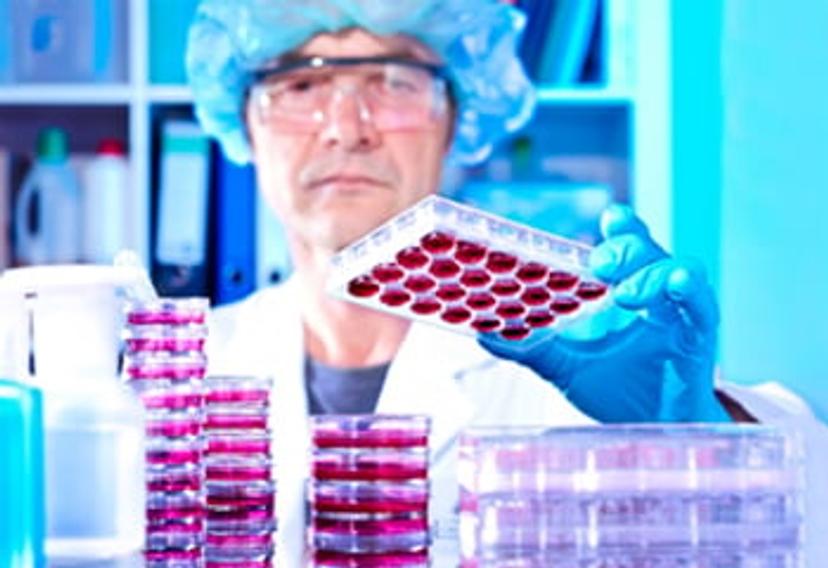
Notably, the most serious type of cell culture contamination is microbial contamination relating to mycoplasmas. Mycoplasma is a genus of bacteria that can be pathogenic to both humans and animals. Interestingly, mycoplasmas lack a cell wall around their membranes, and are the smallest self-replicating organisms to exist, measuring at approximately 0.1 µm in diameter. “These are widespread cell culture contaminants. Technically, mycoplasma are bacteria, which a lot of people don't realize because they are much smaller than most bacteria, and because they are small, they can grow like crazy in a culture without you being able to see them.” This type of bacteria does not cause a pH shift in a culture media, which means many experiments suffer from mycoplasma contamination, without us even knowing. “What is even worse when it comes to mycoplasma contamination is that they don't have a cell wall, and this results in resistance to most antibiotics.” Plus, their small size means they can sometimes slip through sterilization filters. “Beyond the basic signs of slow growth and poor transection, mycoplasmas can affect your cells' metabolism and morphology. They can cause chromosomal alterations, and even damage nucleic acids,” shares Wronski. Therefore, it is no surprise that cell culture contamination can significantly affect experimental results, which is an ongoing problem for many research labs and commercial labs developing new therapeutics and products using cell culture processes.
I would divide the factors responsible for contamination entering the lab into four categories, which are: consumables and reagents, general lab equipment, environmental factors, and aseptic technique.
Kris Wronski
EMEA Cell Culture Applications Scientist, Thermo Fisher Scientific
Introducing contamination into the lab
There are numerous ways that contamination can enter the laboratory setting, including the technicians themselves, poor laboratory technique, cracked bottles, and contaminated lab tools. “I would divide the factors responsible for contamination entering the lab into four categories, which are: consumables and reagents, general lab equipment, environmental factors, and aseptic technique.”
Surprisingly, Wronski mentions that incorrect storage of reagents is a big contributor to cell culture contamination. “The question you need to ask is, are all reagent items of a media stored in the correct temperature? Incorrect storage can promote contamination to develop.” In regard to contamination being introduced via lab equipment, Wronski shares, “contamination introduced by lab equipment occurs when you have not comprehensively validated and established standard operating procedures to maintain, clean, and disinfect the equipment, which can further promote contamination.” Environmental factors are another reason why contamination can occur, which include the humans working within the lab, along with inadequate air conditioning. “As live human beings, we need symbiotic microbes on our skin to function properly, but we can also be a vector carrying highly pathogenic unwanted microbes. We can bring some culture spores with us into the lab on our clothing or even under our shoes.”
Interestingly, it is also important to consider the time of the year when thinking about cell culture contamination, particularly fungal contamination. “Some people have different type of allergies and breathing problems associated with fungus-producing spores, and the fungus producing those spores float through the air. Regarding mold, it can grow on almost anything when there is moisture around.” Wronski continues, “we have peak periods for different fungal spores in the air at different times of the year, or in different geographical regions. When it comes to Europe, the peak usually for fungal spores in the air is late June to August, with some high days in September. But saying that, all around the year fungus spores can be introduced by us and the air conditioning system used in cell culture labs.” To help better manage this, Wronski stated that appropriate risk assessments and prevention mechanisms must be put in place by lab managers and the technicians.
Assessing cell culture contamination risk
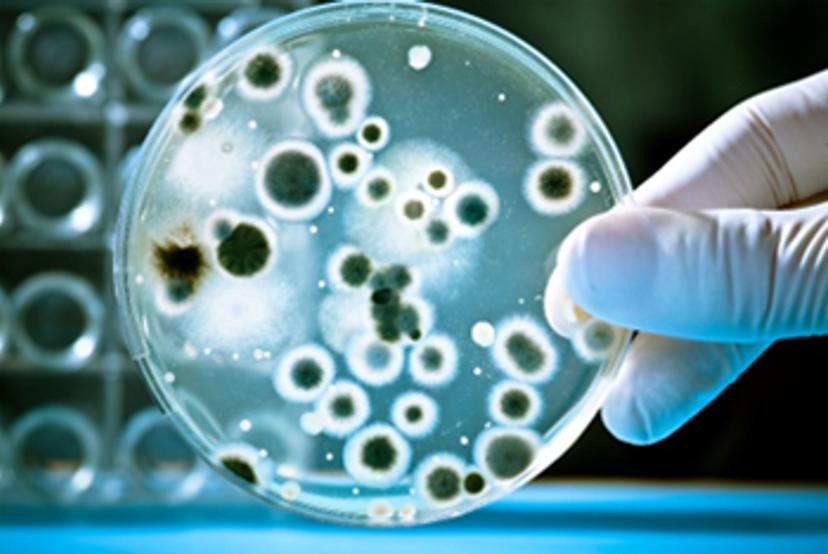
There are many ways to assess the risk of cell culture contamination, however, every lab is different and will choose to approach contamination differently. Wronski explains, “Usually, in order to implement appropriate procedures, you need to develop a risk-based approach. You need to define step-by-step investigational procedures to consequently determine the possible causes of contamination. It is important to be very systematic in the investigation.” For this reason, it is vital for lab users to retrace all of the steps taken in the lab, in order to narrow down the possible cause of contamination. For instance, lab equipment, aseptic technique, and how consumables and reagents are handled can all influence how cells grow and thrive in a culture.
Wronski states, “It is crucial to investigate how each piece of equipment in the chain is used on a daily basis. Is the equipment used exactly the same by every member in a lab? The equipment to consider may include freezers, CO2 incubators, centrifuges, liquid nitrogen tanks and pipettes. For instance, if the pipettes are not disinfected correctly, and not serviced on a regular basis, they can also contribute to the problem by spreading contamination further. In addition, if water baths are not maintained properly, they can also be a great source for contamination.” In the case of CO2 incubators, if they are positioned with incubator doors facing main lab doors or air conditioning vents, each time a lab user opens the incubator door, the airstreams carrying dust with microbes are invited into the incubator chamber, increasing the risk of cell culture contamination and compromising valuable experiments.
Rethink your lab equipment
Many scientists may not be aware that the type of lab equipment they choose to use can have a direct impact on cell growth and health. “The equipment specification design features and performance can have a direct impact on cell growth and viability, and even general lab equipment like centrifuges, biosafety cabinets and CO2 incubators can also have an impact,” explains Wronski. For instance, when considering CO2 incubators, all their associated parameters will impact cell health, such as temperature, CO2 gassing and humidity. The incubator must be able to mimic the conditions of the body where the cells originated from, especially when using primary cells. “CO2 incubators must provide a uniform environment, since cells respond to really small changes in the environment,” says Wronski. Therefore, variation in the incubator means uncontrolled variability in the cells and as a result, inaccurate experimental results. “There are many innovative features which can now be incorporated into CO2 incubators to ensure these parameters are kept uniform.”
It is also important for users to consider the type of sensors used with a CO2 incubator, as well as build in, protected and high capacity water reservoir. “Another feature to consider is high-quality sensors, such as infrared sensors, which are designed to precisely monitor and reflect the CO2 level.” Wronski continues, “I used to work with CO2 incubators with a simple water pan, which you would simply slide into the incubator, but it was always prone to contamination because the water was exposed to the air. Now, there are protected water reservoirs available on the market, and when used in combination with an airflow system, you can create a uniform environment for your cells to thrive and your work is protected from contamination at the same time. You can now incorporate different technologies to make life easier and keep cells healthy,” explains Wronski.
The factors that Wronski has described can all contribute to a fast recovery of all critical parameters to help maintain excellent uniformity, especially when hypoxic conditions are required. “Without gentle active airflow in the chamber, it is not possible to distribute different gases equally in the chamber. Consequently, the cells located on a different shelf don't receive the same quantities of oxygen or CO2. This can be detrimental for sensitive cells and achieving reproducible results.”
Is your lab equipment easy to clean?
As simple as it may seem, it is important to consider whether the lab equipment is easy to disinfect and clean on a regular basis. “You need to make sure your equipment is compatible with the different types of agents and disinfectants that you are planning to use to prevent contamination from developing. For example, some CO2 incubators can be 100% pure copper, like the Thermo Scientific™ Heracell™ VOIS™ CO2 Incubator. There's a lot of published research on copper and the antimicrobial properties of copper,” says Wronski. “You have to be careful here because many manufacturers use clever marketing slogans of incorporating lower percentages of copper into the alloys, and this can really diminish the antimicrobial effect. I encourage readers to do independent research to evaluate each of these features. This can simplify many processes within the lab, and when it comes to cleaning procedures, you can reduce the frequency of cleaning you will need to incorporate into the day-to-day operations.”
Regarding CO2 incubators and sterilization cycles, there are proven and validated ways to reduce the occurrence of cell culture contamination, “I recommend looking for proof of testing and validation of the sterilization cycles according to the latest pharmacopoeia standards. When you look closer, not all manufacturers test or validate these features comprehensively – in accordance with the 10th edition of EU Pharmacopoeia requirements. Many manufacturers don't comprehensively validate the cycles, and don't provide sufficient amounts of data with all positive and negative controls required and use of correct biological indicators, when they perform those validations. Therefore, it is vital scientists using these incubators do their research to protect valuable cell cultures,” explains the expert.
It is important to also not forget critical equipment, used in nearly all laboratories for cells processing – such as centrifuges. Centrifuges, such as the Thermo Scientific™ Sorvall™ X4 Pro Centrifuge now come with fast rotor exchange technology, which helps users quickly disinfect the equipment with more ease than before. “I remember dealing with centrifuges in the past, I couldn't disassemble the rotor very quickly after each spin, and I could not effectively disinfect the centrifuge chamber. It can be achieved much quicker now.” In regard to biosafety cabinets, Wronski explains, “some biosafety cabinets, like the Thermo Scientific™ Herasafe™ 2030i CTS series BSC incorporate different features, where you can now open the front-hinged window fully. This allows you to be able to fully clean and disinfect each part of that cabinet quickly and effectively. Some manufacturers are now thinking about how to make things easier and therefore make our lives easier.”
Helping cells thrive
Wronski states, “cell culture is now moving away from using established cell lines, which are grown for many years by labs. For researchers to generate more precise and more accurate experimental data, you have to move from those cell lines into what we call primary cells, which are derived straight from the human body.” These cells are recognized as being very fragile and complex cells to handle, but they also better mimic conditions in the body, and therefore provide a better representation of the human body. “Oxygen concentrations inside the human or animal body are actually much lower than the air that we breathe. Oxygen in the atmosphere constitutes 20% of the air, but in our tissues, the concentration varies with regard to how close the cells are to the lungs or to arterial blood. So, the microenvironments for those primary cells are dependent on where they are inside our body,” explains Wronski. “Therefore, culturing cells in low oxygen can better mimic the condition inside the body, especially when using primary cells. This is why tri-gas incubators were born, which have capabilities of creating the artificial atmosphere when it comes to manipulating oxygen concentration with the help of nitrogen gas.”
It is no surprise that contamination has the potential to cause harm to many valuable cells and experiments and can cause entire experiments to grind to a halt. This can cause labs to suffer significant financial losses. Wronski concludes, “You will have to discard your cells when it comes to research. You have to start all over again. This can be very expensive – which is challenging for academic labs that don't have a lot of disposable money with grants.” Therefore, it is crucial that labs take the appropriate measures to reduce cell culture contamination, in order to protect valuable samples and their finances. Fortunately, there are many ways lab users can minimize the risk of cell culture contamination as previously outlined by Wronski, who now encourages scientists to do their background research and explore which lab equipment and protocols to employ, to generate highly accurate results that are free from contamination.

